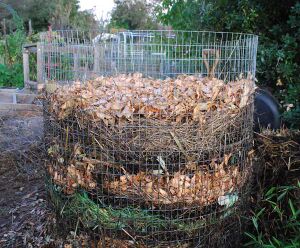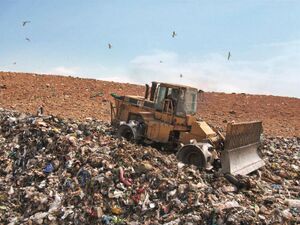Compost
Compost is organic matter that has decomposed aerobically through fungal and bacterial breakdown over time. When finished decomposing, compost has a dark, rich color, an earthy smell, crumbles easily, and the original organic matter is unrecognizable. The amount of time needed varies, typically three to 12 months, and dependent on factors such as temperature, moisture level, the source and size of the organic matter, the type of compost bin used, and how often the material has been turned.
For composting, organic matter is divided into two categories: browns and greens. Browns are carbon sources and greens are nitrogen sources. It is important to keep a 25-30:1 carbon to nitrogen ratio. An excess of carbon will slow the decomposition process and an excess of nitrogen will create a foul smell.
Sources of brown material includes:
- Paper (such as newspaper, writing paper, napkins, and coffee filters)
- Fall leaves
- Hay
- Straw
- Corn stalks
- Dryer lint
- Cotton fabric
- Cardboard (avoid wax covered cardboard)
- Wood ash[1]
Sources of green material includes:
- Vegetable and fruit scraps
- Grass clippings
- Coffee grounds and tea bags
- Plant trimmings
- Eggshells
- Herbivore manure
Avoid:
- Fats, oils, and greases
- Meat
- Carnivore manure (such as dog, cat, or human)
- Dairy products
- Diseased plants
- Glossy paper
- Plastic coated material
- Plants that have started to seed
- Walnuts or walnut shells (contains juglone)
- Charcoal ash[1]
Placement
A compost pile can be placed both in the sun or in the shade, but the increased heat from solar energy if placed in the sun will help break down the organic material faster.[2]
Environmental benefits
According to the EPA, about 28 percent of landfill material in the United States is food waste and yard trimmings. When buried, the organic matter decomposes anaerobically and generates methane. Composting diverts this material from landfills, reduces the amount of methane in the environment, and recycles nutrients back into the soil.

